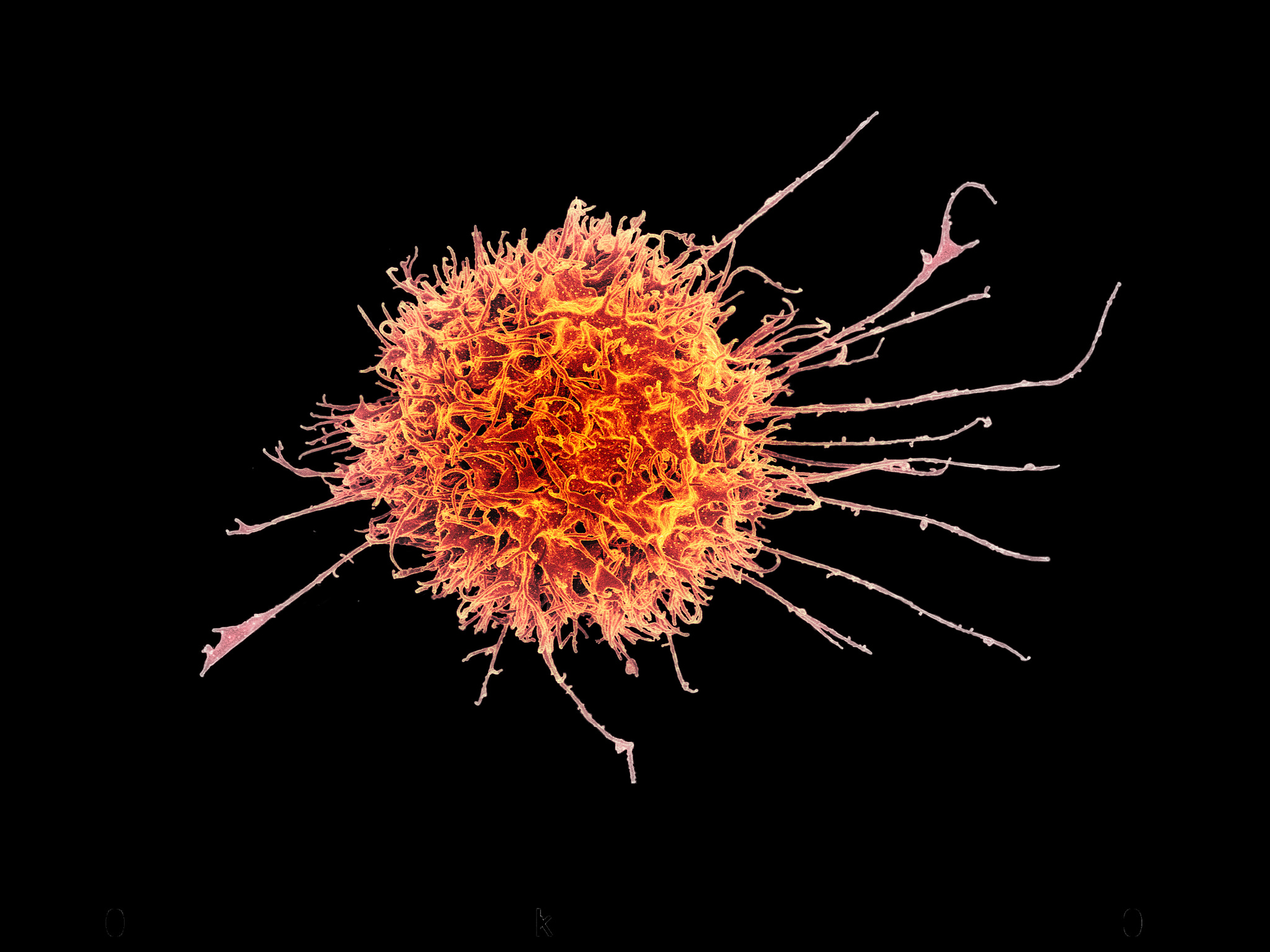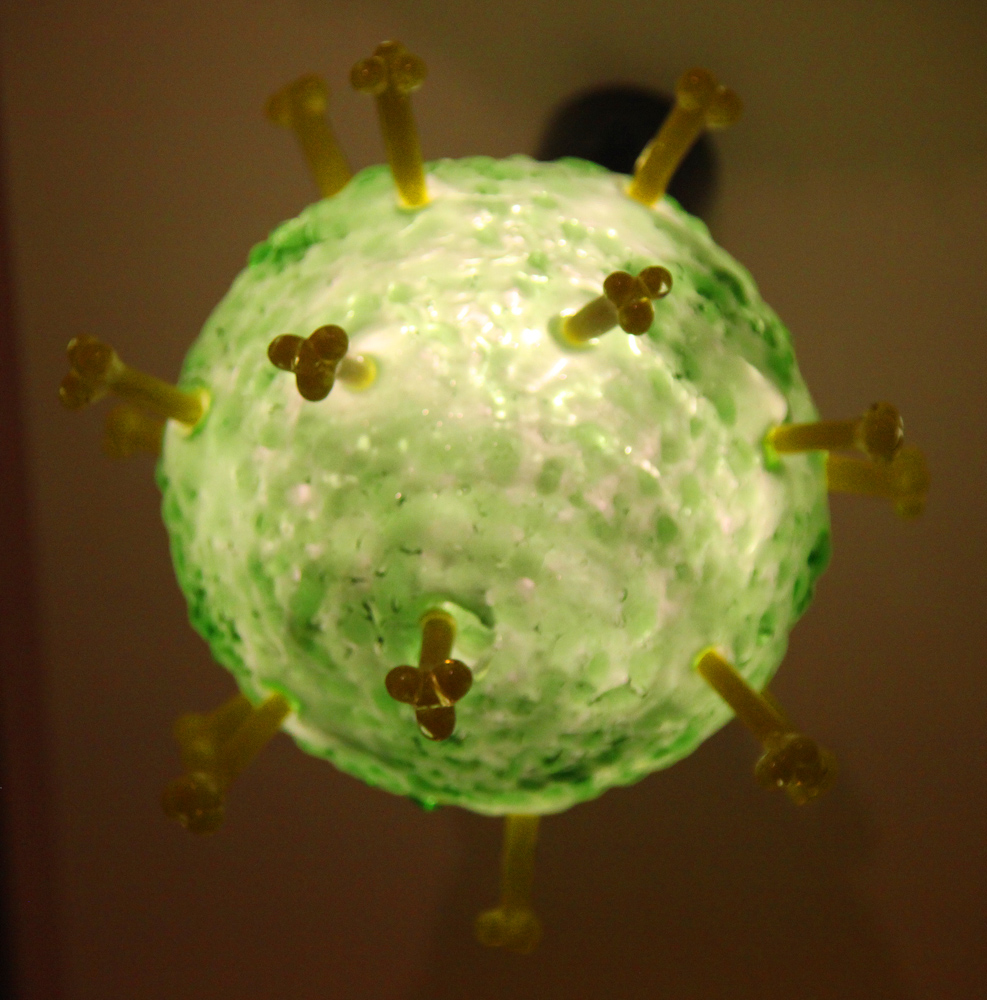
Health & Medicine
The flu-hunters

Researchers have discovered a way to prime the immune system to potentially tackle respiratory infections before we get sick, and work is underway on developing a treatment
Published 22 August 2017
Staying ahead of the fast-changing influenza virus is an unending race for new vaccines. But what if instead of racing for the next vaccine we could simply put our immune systems on high alert in readiness to fight off whatever influenza, or any other infection, throws at us?
A team of researchers at a biotech company spun out of the University of Melbourne are zeroing-in on doing just that - using a compound that can prime immune systems to fight off respiratory infections before they take hold. And we can thank our six-legged cousins – insects.
Insects, unlike humans, don’t have an adaptive immune system that responds to specific infections, but they do have a primordial “innate” immune system that they developed as part of their evolution over 400 million years ago.

The good news is we’ve inherited aspects of this innate immune system which has been built on and extensively modified over evolutionary time. The innate system responds immediately in a generalised way to any infection and in so doing alerts the adaptive immune system to respond more specifically if needed. But because the adaptive system takes days to become fully effective, potentially allowing an infection to spread, a strong immediate response from the innate immune system is an enormous advantage.
Now Melbourne-based Innavac are developing a synthetic compound that University of Melbourne researchers discovered can temporarily put the innate immune system on a high alert ahead of any infection. That early warning is, potentially, enough to enable it to head off the likes of influenza and the common cold, before we even get sick.
“What we are developing would be a preventative,” says Professor David Jackson, from the University’s Department of Microbiology and Immunology at the Peter Doherty Institute, for Infection and Immunity who has founded Innavac after his lab team patented their discoveries.

Health & Medicine
The flu-hunters
“We don’t know what the next flu strain is going to be, or what the next rhinovirus (common cold) will be, but the drug we are working on would be something you could take to alert your innate immune system and protect you against any of these different strains of infections,” he says.
It works by temporarily putting the innate immune system into a state of readiness so that viruses or bacteria are killed as soon as they enter through the nose or mouth, and before it can reach the lungs. A drug based on the compound could be a potential lifesaver for vulnerable people like the elderly, asthma suffers and those with lung diseases, and could be taken at times when the infection risk is high, such as when travelling in confined spaces like areoplanes. It may also be able to provide protection against the onset of virulent new viruses such as bird and swine flu, without having to wait for a vaccine.
Further research work is needed to determine for exactly how long a dose would be effective, but at this stage it appears to provide protection in rodents for several days.
The researchers also need to establish how often a dose could be safely taken since any immune response involves inflammation, which if prolonged can cause other health problems. But so far the results are encouraging.

“At the moment it looks like the innate response triggered by the treatment is sufficient to stop the infection in rodent models, but we need to find out more about the mechanisms involved at a cellular level,” says Professor Jackson.
Such further research and development work has only been made possible by Innavac attracting $6.3 million new venture capital funding from from Australia’s largest life science investment fund, the Medical Research Commercialisation Fund (MRCF), and venture capital fund Uniseed, which is owned by a consortium of Australian universities.
Ironically, it was while trying to develop a new influenza vaccine that Professor Jackson and his research team stumbled on their discovery; that the synthetic compound they were using to test the vaccine in animal models was instead independently boosting the innate immune system. When they then introduced the virus, the already activated innate immune response was enough to inhibit viral replication. It also acted so fast that the animal didn’t appear to suffer any symptoms.
“We had awoken an innate immune response that could then do a very good job of fighting infection,” says Professor Jackson. “It actually produced immunity within hours to protect the rodents from influenza. With a vaccine it would normally take the adaptive immune system several days to produce the right antibodies to fight the infection.

Health & Medicine
Stopping the flu virus at the nose
The compound “tickles” the Toll-Like Receptors (TLR) that stick out from cells and are crucial in calling in white blood cells to fight infections. In this case the compound works on a specific TLR called TLR2.
“By tickling TLR2 with our compound we can generate an innate immune response, such that if we then introduce influenza or any other respiratory virus or bacteria, the body will already have a response running that will prevent the infection taking hold.”
Professor Jackson says the commercial opportunity has only been possible because the researchers took steps at an early stage to patent their findings. “It has been a combination of good science, good research students and good commercial advice,” says Professor Jackson.
“Too often researchers are just focused on publishing their discoveries in academic journals without first assessing the commercial opportunity. Once the research is published, if the intellectual capital hasn’t first been patented then they have lost their chance. The research often then can’t be developed for humans as no pharmaceutical company can afford to develop a drug without a protective intellectual property position.”
Dr Chris Nave, Principal Executive of the MRCF and Managing Director of Brandon Capital says there is often a disconnect between strong science and commercialisation because academic rewards are traditionally focused on being published in esteemed journals.

Health & Medicine
Vaccination: A numbers game that adds up
“The current award and promotion system within Australian academia doesn’t sufficiently recognise and support those researchers that translate their research into industry for public benefit,” says Dr Nave.
Professor Jackson says it has become a routine part of his team’s work to assess their discoveries for their commercial potential before they publish and before they present at conferences.
“Making an impact on human health and commercialisation are absolutely linked. Both need to come together. Researchers overall don’t consider the commercial opportunities of their work, and don’t realise that they can protect its potential by taking out a patent before they publish,” he says.
But for now, the research has proven the technology works in a pre-clinical setting using rodent models. Further work is now needed to fully understand the mechanics of how it works and establish safe dosage levels ahead of clinical trials in people.
Banner image: A colourised human Natural Killer white blood cell that is part of the innate immune system. Picture: National Institute of Allergy and Infectious Diseases/Flickr